
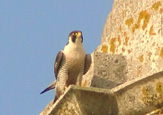
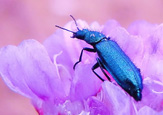
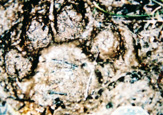
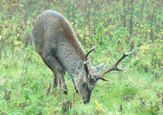
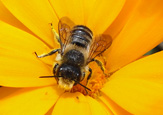
Mande Burong in Meghalaya, India (Page 1 of 3)
Mande Burong is the Meghalayan name for the huge man like ape. It seems to be the same sort of animal as the Yeti, the name given to the similar animal of the Himalaya. It is just a small distance from Bhutan and Southern China to Meghalaya so we could be talking about the same animal and I personally think it is one and the same.
Many people scorn at the idea that there may be a huge hairy man like ape living in these times. Why? There are people who are sceptical of anything different, especially subjects steeped in myth or legend. Those people are actually disillusioned into thinking that any myth or legend is precisely that. There is usually truth within any element of legend or myth; especially if it is repeated throughout the world, by many people, and credible witnesses. One only has to delve deep into any subject and one ids bombarded with revelations of which would astound the sceptic; after all scepticism is all about ignorance.
I have not just got an interest in zoology but also cryptozoology. That does not mean that I am a monster hunter. Far from it, I believe that there are many species of unknown animals to science living on earth, many of which have become extinct, some may be still surviving as relicts of prehistoric fauna, others are simply odd animals that native people revere red as gods, demons or just normal animals. The fact that many of these may find themselves in science fictional literature is simply because the subject is appealing and holds a sense of wonder, romanticism, excitement and so on. One must not be put of by this, but perhaps do the opposite. That is what the centre for Fortean Zoology does. Proper science should be based on research and truth finding; the search for knowledge. I have always been a truth seeker, and I have incorporated that philosophy here as I take you on a short journey to search for a legendry animal in north East India.
The local tribes knew of an animal they called the Mande Burong, basically translating to the man of the forest, similar to orang utan. It was thought to be a rare creature in modern days but many witnesses claim to have seen it. I thought that we would not find any signs of such an animal. But I was not sceptical of its existence. I have read books on similar animals such as the American Bigfoot and the Russian and Chinese and Australian equivalents. The expedition was to look for this animal, and I joined them. Lush tropical jungles with ample food in the way of bananas, citrus, yams, figs and bamboo as well as a host of animals was actually quite a good area for the animal to exist, and if it did, then this place could easily hold such animals. In fact, as the weeks went by I thought that this was probably the ancestral home of such an animal. I can’t imagine such a beast living in the cold snow of mountains and such like. Perhaps the animal migrates across such terrain and then its footprints are found.
Five chaps from England went on a search for the beast, and we may have found evidence. We spoke to several witnesses, local tribal people who have no axe to grind, but may have been ridiculed in the past for speaking out about their experiences, as the meghalayan authorities try to hide the fact. Superstition is rife in tribal culture so many a folk may presume that the Mande burong is simply such. The stories would suggest otherwise. After speaking to several people who claimed to see the animal we went to a local sighting area and found several footprints along a stream bank. Then we found one or two more in completely different area many tens of miles away. All signs were in thick jungle and areas of sparse human habitation.
The local people said that the animal is up to nine feet in height, broad, hairy and bipedal. They feed on bamboo, crabs, bananas and other fruit. Indeed when we traversed the stream, we found discarded remains of freshwater crabs that showed no sign of being eaten by otters or other mustelids for example, but as if a large hand had grabbed them and a mouth had sucked out the innards. There were large boulders overturned, too large a rock for people to move. The crab remains were beside them. The footprints were there also, making their way upstream, to the thicker jungle. This was the stuff of dreams and I was living it. In ninety degrees of warm sun, a myriad of strange and wonderful insects surrounded me, as well as the loud deafening sound of cicadas and frogs and crickets. The expedition is to be made into a documentary in the near future. I can only summarize here, perhaps other members of the group may have put features on the internet. We are currently writing a book about our adventures. Shown are just a few of the photos that I took.
Page 1 | Page 2 | Page 3 | Photographs